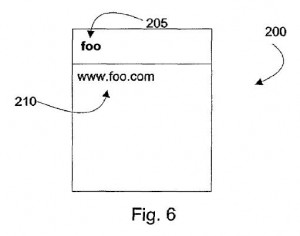Myriad amicus briefs (read 30 and counting) have now been filed regarding Bilksi. On the two extremes of this debate are patent lawyers and the Free Software Foundation.

Washington State Patent Law Association (WSPLA) filed a brief defending Bilski and asking for the CAFA to reaffirm and rewrite State Street Bank to be consistent with recent SC rulings. This brief is aimed at merely expanding subject matter under Section 101.
A “process” entails an act or a series of acts performed upon a subject matter, or a mode of treatment of certain materials to produce a given result. When considered as a whole, a process must be new and useful in that it must be manmade and not exist in nature, and it must be practically useful. Such a process does not have to result in a physical transformation or be tied to a machine, although such provisions are indicator of patent eligibility. -WSPLA Summary of Argument
This wide reading of patent law ensures that lawyers can patent any “use” process, but does not provide any balance for the public interest. Additionally the WSPLA wants to extend Diamond v. Dieher to provide support for patenting mathematical formulas:
the use of the Arrhenius equation in the claim was not an unapplied mathematical formula; rather, it was part of an application to cure rubber. Second, even though a computer wasn’t needed in the process of curing natural or synthetic rubber, if the use of the computer incorporated in the claimed process significantly lessened the possibility of overcuring or undercuring, the process as a whole did not become unpatentable subject matter. Diehr, 450. WSPLA Brief at 8.
Misreadings of cases including Diamond v. Diehr have expanded the scope of patent law to include mathematical formulas when they are used with computers. If we can not use mathematical formulas with computers, or calculators which is what computers are essentially, then where can we use them? The idea patenting mathematical formulas by simply adding a step that runs the formula on a computer is ridiculous at best.

On the other side of the patent debate, Free Software Foundation’s End software patents campaign filed a brief arguing that Bilski is the perfect opportunity for the CAFC to examine software patents:
The conclusion of Diamond v. Diehr, 450 U.S. 175 (1981)
directly reiterated the above, while on the other hand
acknowledging that bona fide patent-eligible inventions may
include a software component. It is well worth reprinting the
bulk of the conclusion:
. . . . A mathematical formula as such is not accorded
the protection of our patent laws, Gottschalk v. Benson, 409
U.S. 63 (1972), and this principle cannot be circumvented by
attempting to limit the use of the formula to a particular
technological environment. Parker v. Flook, 437 U.S. 584
(1978). Similarly, insignificant postsolution activity will not
transform an unpatentable principle into a patentable
process. Ibid. To hold otherwise would allow a competent
draftsman to evade the recognized limitations on the type of
subject matter eligible for patent protection. On the other
hand, when a claim containing a mathematical formula
implements or applies that formula in a structure or process
which, when considered as a whole, is performing a function
which the patent laws were designed to protect (e. g.,
transforming or reducing an article to a different state or
thing), then the claim satisfies the requirements of § 101. . .
.
Id. at 191-92 (notes omitted, emphasis added).
In all cases, the Court expressed disdain for allowing
patents on software loaded onto a standard computer, repeatedly
referring to it as an “insignificant,” “conventional or obvious”
modification of the base formula. ESP Bried at 6. (emphasis added)
I agree with FSF’s reading of Diamond v. Deihr which severely limits all software patents. Running a mathematical formula on a computer is obvious. Computers do calculations better than people. I hope to see the Supreme Court take up this issue along with the State Street Bank precedence, ruling that if a mathematical formula or process is not patentable without a computer then merely adding a computer to do the same thing more efficiently does not create patentable subject matter or overcome the obviousness requirement.
Related links:
Washington State Patent Law Blog on the Washington Patent Lawyers Brief
Patently-O’s list of 30 In re Bilski briefs
End Software Patents Brief
Washington State Patent Lawyers Association Brief
 Here is one more painful example of why software patents do not encourage innovation. Microsoft was granted a patent for adding www. and .com to text on a mobile device U.S. Patent No. 7,392,326 for Text Entry in an Electronic Device. The patent has scores of prior art dating back early web browsers. Put a web browser on a laptop and it is a mobile device. The really painful thing about this patent is that it took 7 years to grant! I wonder how many examiners they wore down with this bogus claim. Filed in 2001 and granted in 2008. This still gives MS 13 years of exclusivity on this patent.
Here is one more painful example of why software patents do not encourage innovation. Microsoft was granted a patent for adding www. and .com to text on a mobile device U.S. Patent No. 7,392,326 for Text Entry in an Electronic Device. The patent has scores of prior art dating back early web browsers. Put a web browser on a laptop and it is a mobile device. The really painful thing about this patent is that it took 7 years to grant! I wonder how many examiners they wore down with this bogus claim. Filed in 2001 and granted in 2008. This still gives MS 13 years of exclusivity on this patent. 



